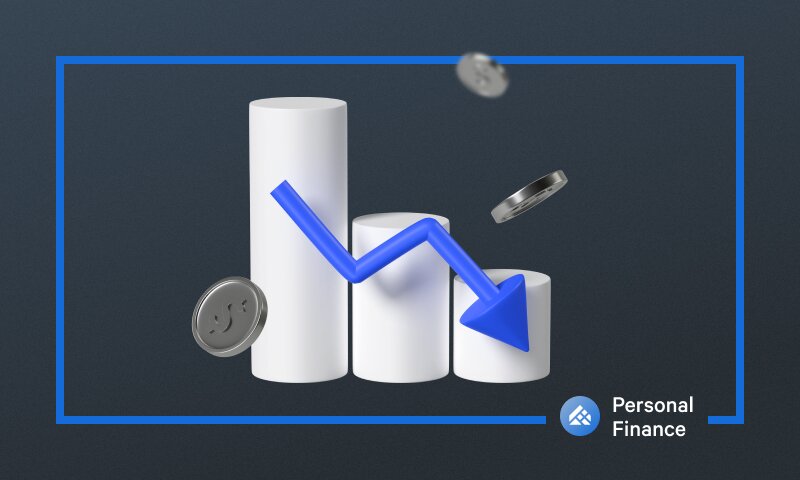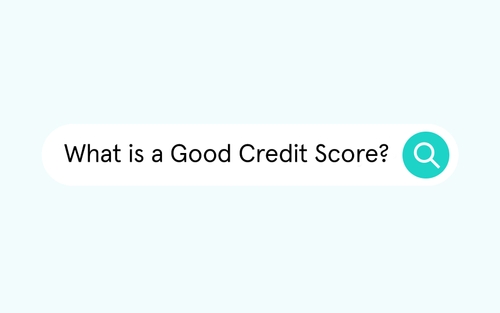In 2023, Americans carried an average of $21,800 in personal debt (excluding mortgages).
Just the word “debt” can give anyone anxiety. But debt isn’t always inherently a bad thing. Taking on some debt at the right time — and managing your debt effectively – can help you boost your credit score and reach your personal goals.
Here’s how to manage debt the right way.
How to Manage Debt: Understand Good Debt and Bad Debt
First, it helps to understand that not all debt is created equal. Debt can be put into two main categories: "good debt" and "bad debt."
Good debt is an investment in your future. This includes mortgages and student loans, which can lead to increased assets or income.
Bad debt is non-productive and often comes with high interest rates, such as credit card debt or excessive personal loans. This debt only leads to financial problems if left unchecked. However, if you can manage your bad debt effectively, like paying off your credit cards in full each month, even so-called “bad debt” can help you build credit over time.
Know What You Owe
Before you can begin managing debt, you need to have a clear understanding of your financial obligations.
Your credit report offers a snapshot of your financial health. It includes information about your credit accounts, payment history, outstanding balances, and public records like bankruptcies or liens. By examining your credit history, you can identify all your outstanding debts in one place and prioritize each debt strategically.
By reviewing your credit report, you can track your payments and spot any late or missed payments. Monitoring credit utilization on your credit report can also help you adjust your spending and repayment strategies.
Decide What You Can Pay
Once you've assessed your debt, the next step is to create a budget that allows you to pay off your obligations systematically.
- Track Your Income and Expenses: Record your monthly income and expenses. Be sure to include essentials like housing, groceries, utilities, transportation, and discretionary spending.
- Allocate a Portion for Debt Repayment: Determine how much you can allocate to your debt repayment while maintaining a comfortable lifestyle.
Pay More Than the Minimum
Paying only the minimum on your credit cards and other debts may keep you in debt for years.
For example, you have a credit card with a $5,000 balance and an 18% interest rate. The minimum payment on your credit card is $125. By paying only $125 per month, you’ll pay $6,923 overall, which will take 273 months to pay off.
To accelerate your debt repayment, follow these steps:
- Prioritize High-Interest Debts: Channel a significant portion of your budget towards high-interest debts first, such as credit cards, while maintaining minimum payments on other debts.
- Make Extra Payments: If you have extra money, pay it towards your debts. Even small additional payments can significantly reduce the time it takes to become debt-free.
Be Strategic With Credit Cards
Credit cards can be a double-edged sword, but with responsible usage, you can build your credit and manage your finances effectively:
- Pay Off Your Balance in Full: Pay your credit card balance monthly to avoid accumulating high-interest debt.
- Limit Credit Card Use: Use your credit card sparingly and only for necessary purchases.
- Don’t Open Too Many Accounts: Don’t apply for more credit than you need. While opening a new account to get a discount on a big purchase is tempting, you’ll likely only add more temptation and debt to deal with in the future.
Know When to Take on More Debt
Knowing when you can (or should) take on more debt can be tricky. One trick is to look at your debt-to-income ratio.
The debt-to-income (DTI) ratio assesses your financial health by comparing your total monthly debt payments to your gross monthly income. It is typically expressed as a percentage and calculated by dividing total monthly debt payments by gross monthly income.
You can roughly calculate your DTI by dividing your monthly net income against your monthly debt obligations.
(If you want to see your DTI as a percentage, the formula is: (Total Monthly Debt Payments / Gross Monthly Income) * 100.)
Generally speaking, many experts recommend keeping your DTI below 35%. However, you should also consider if you can comfortably afford to repay the debt you’re considering. If paying off the debt will hurt your quality of life, it may be worth waiting until you can afford to pay in cash.
What to Do If Debt Gets Overwhelming
If your debt becomes overwhelming, there are strategies to help you regain control:
Snowball Method
How it works: Start by paying off your smallest debts first, regardless of interest rates. Once the smallest debt is cleared, use the extra money to tackle the next smallest debt. This creates a snowball effect, providing a psychological boost as you see quick wins.
Benefits: Boosts morale by achieving small victories, creating momentum for tackling larger debts.
Avalanche Method
How it works: Focus on paying off the debt with the highest interest rate first, then move on to the next highest. This method minimizes the total interest paid over time.
Benefits: Reduces the overall cost of debt and can lead to faster overall debt elimination.
Seek Help from a Credit Counselor
When to consider it: If your debt situation is complex or you find it challenging to manage independently.
How they can help:
- Debt Management Plan (DMP): Credit counselors can negotiate with creditors and credit card companies to lower interest rates and create a structured repayment plan.
- Financial Education: Gain valuable insights into budgeting, financial planning, and responsible credit use.
Benefits: Credit counseling provides professional guidance, potentially lowers interest rates, and helps create a sustainable repayment plan.
Consider Debt Consolidation Carefully
How it works: Debt consolidation involves combining multiple debts, such as credit card balances or personal loans, into a single, more manageable loan. This is typically done through a debt consolidation loan or a balance transfer credit card.
Benefits:
- Simplified Payments: Instead of managing multiple payments with varying due dates and interest rates, debt consolidation streamlines the process by creating one monthly payment.
- Potential for Lower Interest Rates: Debt consolidation loans often have lower interest rates than credit cards or other high-interest debts. This can result in reduced overall interest costs.
- Extended Repayment Terms: Consolidation loans may offer longer repayment terms, spreading payments over an extended period. While this may increase the total interest charges paid, it can lower monthly payments, providing immediate financial relief.
- Fixed Interest Rates: Some consolidation loans come with fixed interest rates, offering predictability in monthly payments compared to variable rates associated with credit cards.
Considerations:
- Credit Score Impact: Opening a new credit account or obtaining a debt consolidation loan may initially impact your credit score. However, if managed responsibly, it can contribute to long-term credit improvement.
- Addressing Root Causes: Debt consolidation is most effective when accompanied by a commitment to address the root causes of debt. Without addressing spending habits and budgeting issues, consolidation may provide only temporary relief.
- Avoiding New Debt: To maximize the benefits of debt consolidation, it's crucial to avoid accumulating new debt. This requires disciplined financial management and responsible credit use.
Consider Legal Options as a Last Resort
Bankruptcy: Consult with a legal professional to explore the possibility of bankruptcy if all other options have been exhausted. Understand the long-term consequences and implications before pursuing this route.
Benefits: Provides a fresh start in extreme financial situations.
Considerations: Bankruptcy can have a severe negative impact on your credit score. A Chapter 7 bankruptcy can appear on your credit report for up to 10 years. While the impact will lessen with time, you may struggle to qualify for credit or loan products, especially in the first few years.
Managing debt effectively requires understanding the distinction between good and bad debt, tracking your financial obligations, creating a realistic budget, and prioritizing debt repayment strategies.
It can feel overwhelming at first, but by paying more than the minimum, being strategic with credit card usage, and knowing when to take on more debt, you can use debt as a powerful tool to reach your goals.







